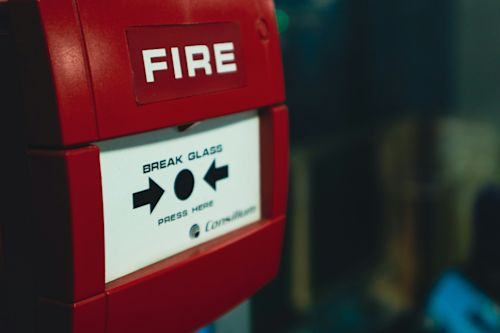When the American supermarket chain "Piggly Wiggly" opened its doors to customers at the beginning of the 20th century, its founder, Clarence Saunders, was concerned about capacity and collective hysteria. For this reason, he installed an entry system to regulate the flow of people and allow only one person to pass at a time. Although farmers from various civilizations used similar turnstile systems for herding animals for millennia, the entry solution at "Piggly Wiggly" was the first recorded example of a modern sensor corridor.
Approximately a century later, especially in high-traffic environments, corridors have become the most widely used access solutions. It is expected that their value in the global market will increase to 106 million dollars in 2026, up from 88 million dollars in 2020.
Given the following benefits and advantages of turnstiles, it is not surprising that their popularity continues to grow.
Solutions for capacity control
Secure entry control for crowded facilities
In combination with a credential such as ID cards, sensor corridors guarantee maximum security for office buildings.Thanks to technological advances, today’s sensor corridors are far from the rudimentary metal doors. Built for reliable and long-lasting performance in high-volume situations, modern sensor corridors monitor, count, and maintain reliable access control.
These features enhance security, as they allow control over the number of people entering and leaving a building with the credentials presented, and control the direction of passage.
Corridors with electronic access control can operate with identification readers and biometric systems. These are even more effective ways to keep unauthorized customers out and further increase security.
Efficiency in access control
Sensor corridors can register up to 30 people per minute. In buildings where there is a sensor corridor, members or visitors can simply approach, present their credentials, and enter the building. This not only saves visitors time, but also reduces a significant burden on receptionists.
Depending on operational needs, access through individualization systems can also be combined with almost any type of credential, such as an ID card, a barcode, a QR code, or even cash. Especially in the case of large or high-traffic facilities, such as offices, libraries, or stadiums, turnstiles are still considered the most effective method for regulating access.
Whether it is an airport gate that can scan a boarding pass, or a public restroom that can be accessed with a coin, sensor corridors are the right access solutions to optimize a heavy flow of people.
Modern individualization systems make data collection easier
The ability of modern sensor corridors to combine credentials with payment methods, as well as to control and limit access, also makes them a powerful tool for leveraging data.
The data collected by sensor corridors about the profile or behavior of visitors can enable building administrators to improve business decision-making. For example, sensor corridors can reveal peak hours or the average time spent on an activity. In this way, they can help building administrators and executives understand and analyze the behavior of their customers and improve their products and services.
Sensor corridor designs deter crime
It is possible to customize modern sensor corridors with a wide range of materials, casings, and finishes to complement the design without compromising security. Nevertheless, sensor corridors continue to act as a visual deterrent to potential threats. Even when they have a more attractive appearance, they remain a tangible reminder to anyone with criminal intentions that the facility is protected and off-limits.
The same applies to environments where an extra effort is needed to enhance security. Floor-to-ceiling individualization systems—also known as full-height turnstiles—make high-risk or sensitive facilities virtually impenetrable.
Although they have existed for a long time, individualization systems continue to evolve to meet the needs of modern customers and businesses. As they become smarter and more connected, there is no doubt that they are better prepared than ever to provide safe and convenient access control in high-traffic environments.
Block



